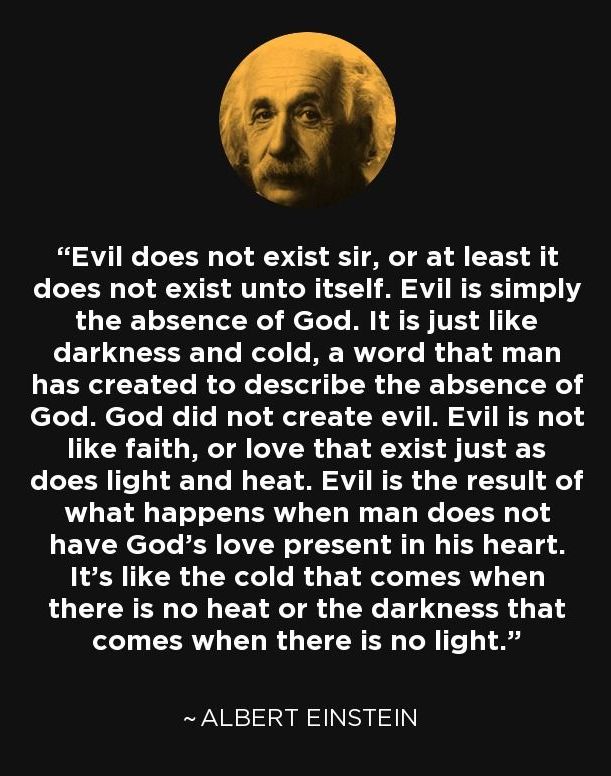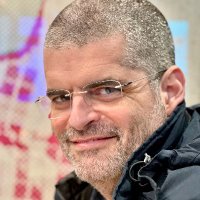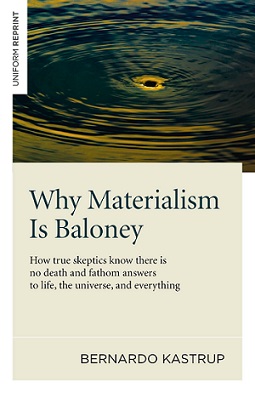|
Word Gems
exploring self-realization, sacred personhood, and full humanity
Is Good the opposite of Evil?
return to the previous page
Dr. Adler in his essay, summarized in my own, provided great detail concerning the shades of meaning for the "good"; oftentimes referring to the things of the world which we desire and give pleasure.
But there is a sense in which the Good can never have an opposite.
"Here is the paradox: life’s greatest mystery - death - seems to be its opposite and very denial. However, anyone who reads Deepak Chopra’s penetrating and insightful investigation into this great mystery with an open mind will come to realize that the opposite of death is birth, not life. Life, which, in essence, is consciousness, is eternal and has no opposite. There is no death, only the metamorphosis of life-forms, consciousness appearing as this or that. This is the liberating truth [Deepak’s book, Life After Death: The Burden Of Proof] continuously points to." Eckhart Tolle
The opposite of Life is not death. Life is eternal, all pervasive, never ending; as such, it has no opposite. In fact, all of the great cosmic virtues, which represent the mind of God, have no opposite.
Goodness, in its highest sense, is a form of Love, and it, too, has no opposite.
Everything that has a beginning is also subject to an ending.
But there exists a domain beyond the reach of time’s degradation. There, things simply exist, eternally, have always been, have no opposite, no duality, and do not suffer loss.
Dr. Adler explains that we use the word "good" to refer to anything we like in this world - good coffee, a good movie, a good photograph, a good poem. And if we are deprived of our favorite things, we call this "bad."
We do not desire these lesser goods for their own sakes, but, as Dr. Adler points out, merely for their exchange value. We want them because we believe they will make us happy. And their absence we call Evil.
But the "goods of the soul" are different. We want these as an end in themselves. We will find that if we become the Love, if we become the Good, we will also become the Happiness.
To become the Love and the Goodness, is to discover that these virtues have no opposite. At that point, everything that we do or think is Love and Goodness.
The following is an excerpt from the article on "Satan." See the full discussion there.
The Eternal our God is One - that is, God is Singular Pervasive Reality
Dr. Gerald Schroeder, MIT physicist and Hebrew scholar, is one of the great teachers. The following is an excerpt from one of his excellent books, "The Hidden Face of God." Therein, he explains that "the Shema" - an epicentral prayer of Judaism, to which Jesus himself drew special attention - speaks to the fact that God exists as Singular Pervasive Reality.
"Hear O Israel, the Eternal our God, the Eternal is One" is no banal pronouncement that there is but one deity. This is not the point of the Hebrew text. Dr. Schroeder enlightens us:
|
... a unity pervades and underlies all existence. This is the meaning of "the Eternal is One" (Deut. 6:4)…
But don't think that this is the kind of one after which might come the quantities two, three, and four. Nothing as superficial as a number is being revealed in these statements.
Rather, the infinite metaphysical as perceived by the physical is an all-encompassing, universal unity…
“You shall know this day and place it in your heart that the Eternal is God in heaven above and on earth below” (Deut. 4:39). ain od -- a Hebrew expression in this verse meaning there is nothing else.
That is to say, there is nothing else. Nothing other than this singular totality.
Everything, everything with no exception, is a manifestation of an eternal unity, a transcending ubiquitous consciousness, which many label as God...
|
Those who live on lower levels of fear-based consciousness see lack and privation everywhere; for them, the glass is always half-empty.
They see no evidence of God and Ultimate Goodness. They see Evil in the world.
- Evil has no substance in reality but is merely a point of view, a mental frame of reference, an editorial comment, a private and prejudiced opinion.

|
'the Eternal is One, there is nothing else': the parable of the two whirlpools

Elenchus. Our statements concerning “the Eternal is One, there is nothing else” are not easy to understand.
Kairissi. Which is why quantum mechanics’ assertions are also non-intuitive; that, consciousness, not matter, is the ground of all being in the universe, and that everything derives from Universal Consciousness.
E. It’s not intuitive because pretty much everyone is a materialist at heart. It’s really hard not to be; I mean, trees and tables, people and pineapples, all seem very solid to us. And not just solid, but they definitely seem to be “out there,” separate from ourselves.
K. It’s a hard sell to suggest, as the quantum experiments indicate, that everything is connected.
E. Moreover, mind does not live in a little house called the brain, but instead, the brain, the whole body, all people and the entire universe, exist within mind, within Universal Mind.
K. We’d like to report to our readers that we’ve encountered what is probably the best analogy to explain “the Eternal is One, there is nothing else”…
E. … and also that everything comes from, is made of, consciousness, Universal Consciousness. Let’s introduce Dr. Kastrup:

Dr. Bernardo Kastrup, PhD philosophy, PhD computer science, for many years worked at CERN, the large hadron collider in Geneva.

E. Given Dr. Kastrup’s credentials, he’s probably the leading spokesman in the world today in terms of explaining the fraudulent doctrine of the primacy of matter.
K. He’s very hard to argue against. His erudition and sharp angle on logic reminds me of this:
Sir Arthur Quiller-Couch (1863-1944), On The Art Of Reading: "A very well-informed person is an object of terror."
E. This quote makes me smile, and readers will want to get Kastrup’s books for the full account, but for our purposes here let’s focus on his brilliant analogy of the two whirlpools:

K. Each human being corresponds to a different whirlpool; each person with his or her particular points of view and field of personal consciousness.
E. But here's where the fun begins. The whirlpools are not exactly stand-alone entities. These "bodies" are not substantive at all but only apparently so. And they might seem to exist "separately" in a vast ocean but, in reality, are connected, as each merely expresses, in a unique way, the underlying medium which is the ocean.
K. Each whirlpool is made of the same water, comes from the same source; so it is with apparently individual human minds.
E. Kastrup points out that these whirlpools-as-people are neither truly separate nor substantive but are "just undulations - disturbances - of the medium," be it the ocean or Universal Mind.
K. His thought-provoking definition of reality is a collection of "excitations" of Universal Consciousness.
E. This "parable of the two whirlpools" helps us visualize the meaning of "brains exist within consciousness" rather than "consciousness existing within brains."
|
|



